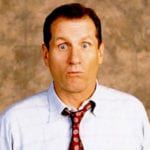 Music
Music  Music
Music  History
History 10 Less Than Jolly Events That Occurred on December 25
 Weird Stuff
Weird Stuff 10 Funny Ways That Researchers Overthink Christmas
 Politics
Politics 10 Political Scandals That Sent Crowds Into the Streets
 Weird Stuff
Weird Stuff Ten Bizarre Facts About The Doge Meme
 Our World
Our World 10 Ways Your Christmas Tree Is More Lit Than You Think
 Movies and TV
Movies and TV The 10 Coolest Stars to Set Sail on The Love Boat
 History
History 10 Things You Didn’t Know About the American National Anthem
 Technology
Technology Top 10 Everyday Tech Buzzwords That Hide a Darker Past
 Humans
Humans 10 Everyday Human Behaviors That Are Actually Survival Instincts
 Music
Music 10 Surprising Origin Stories of Your Favorite Holiday Songs
 History
History 10 Less Than Jolly Events That Occurred on December 25
 Weird Stuff
Weird Stuff 10 Funny Ways That Researchers Overthink Christmas
Who's Behind Listverse?

Jamie Frater
Head Editor
Jamie founded Listverse due to an insatiable desire to share fascinating, obscure, and bizarre facts. He has been a guest speaker on numerous national radio and television stations and is a five time published author.
More About Us Politics
Politics 10 Political Scandals That Sent Crowds Into the Streets
 Weird Stuff
Weird Stuff Ten Bizarre Facts About The Doge Meme
 Our World
Our World 10 Ways Your Christmas Tree Is More Lit Than You Think
 Movies and TV
Movies and TV The 10 Coolest Stars to Set Sail on The Love Boat
 History
History 10 Things You Didn’t Know About the American National Anthem
 Technology
Technology Top 10 Everyday Tech Buzzwords That Hide a Darker Past
 Humans
Humans 10 Everyday Human Behaviors That Are Actually Survival Instincts
10 Origin Stories of Favorite Classic Sitcoms
We know that many classic American TV series were either adapted from recycled shows that originated in other countries, were spin-offs of existing series, or were based on films. However, the details surrounding the origins of some shows, especially situation comedies, are often surprising and can be insightful for fans. Here are the eye-opening stories of 10 classic sitcoms.
Related: Top 10 Things We’ve Learned From Watching Comedy Shows
10 Barney Miller (1975–1982)
In the 1970s, prime-time TV lineups were packed with police dramas. The creators of Barney Miller wanted to do a humorous cop show. Although it was a comedy, the show’s atmosphere and daily activity were much more authentic to a police station house than its dramatic counterparts, as noted by many real law enforcement officers. The pilot, called “The Life and Times of Captain Barney Miller,” was as much about Barney’s home life as his work life and bore little resemblance to the series, in part because the original cast was almost completely replaced.
Two exceptions were Hal Linden, who reluctantly gave up a part in a Broadway play to star as the title character in this risky new series, and Abe Vigoda, who played the popular Detective Fish. Veteran director/producer John Rich, who was brought in to fix the initially flawed project, thought Barney Miller should be centered at the station house, and the show quickly became a workplace comedy with very little about the personal lives of Miller or the other characters. The revamped program went from being a rejected pilot aired on ABC’s Just for Laughs summer anthology series to the iconic, long-running show we remember.[1]
9 I Love Lucy (1951–1957)
Considering how important visuals were to I Love Lucy, from slapstick comedy to the exceptionally expressive faces of the leading actors, it’s difficult to imagine the show limited to radio. However, the original version of the series, titled My Favorite Husband, was a radio comedy based on the novel Mr. and Mrs. Cugat. The show, starring Lucille Ball, was so successful that producers were anxious to adapt it to the exciting new medium of television. Originally, it was planned to cast Richard Denning, the same actor who played Ball’s bank vice president husband on the radio, in the TV version.
While Denning did go on to play the part in another adaptation of the series, Ball, who wanted to find a way to spend more time with her frequently on-the-road bandleader husband, insisted Desi Arnaz play opposite her in this proposed incarnation. Executives were against the idea of hiring the Cuban-American Arnaz because of the perception that viewers wouldn’t accept an ethnically mixed couple on screen.
After demonstrating what a great team they were by doing a Vaudeville tour together, Ball eventually got her way, and instead of hurting the sitcom, the cultural contrasts between Ball and Arnaz only made the show more entertaining. Produced by the couple’s Desilu Productions with My Favorite Husband radio show writers Madelyn Pugh and Bob Carroll Jr. on board and newly cast supporting actors William Frawley and Vivian Vance, I Love Lucy became a true television classic.[2]
8 The Nanny (1993–1999)
It may have been good luck that Fran Drescher found herself on a transatlantic flight with the then-president of CBS Entertainment, Jeff Sagansky, in 1991, but it was what she did with the opportunity that made all the difference. She had already worked for Sagansky on two unsuccessful projects, including the failed series Princesses. Drescher told the exec that “everyone kept trying to use her as a side dish but that she was the main course,” according to The Hollywood Reporter.
Not only insisting that she should star in the show but offering to write and produce the show with her husband at the time, Peter Marc Jacobson, it’s no wonder that Sagansky thought she was being “unbelievably brazen.” But she convinced Sagansky to set up a meeting to listen to their pitches. The problem was that the couple didn’t have any yet. However, fate once again lent a hand when she got the idea to do a humorous take-off of The Sound of Music with herself in the lead after going on a shopping trip with the teenage daughter of her model/actress friend Twiggy while in London. The end result was the hit sitcom The Nanny, starring Drescher as Fran Fine, a saucy, wise-cracking but lovable caregiver to the children of Broadway producer and would-be love interest Maxwell Sheffield (Charles Shaughnessy).[3]
7 The Flintstones (1960–1966)
Animators William Hanna and Joseph Barbera, who had scored success with collaborations on the Tom and Jerry theatrical cartoons and animated TV programs like The Huckleberry Hound Show, made history with the first prime-time animated series—prehistoric sitcom The Flintstones.
A lot of ideas were tossed around by Hanna and Barbera when they were trying to find a theme for their next series, including shows about pilgrims, Native Americans, and hillbillies. The Stone Age was so appealing because, as Joseph Barbera said, “You were able to take anything that was current and convert it to the Stone Age.”
Many people take for granted that The Flintstones was a parody of The Honeymooners. While there are clear similarities, Barbera would never confirm that the hit Jackie Gleason sitcom inspired The Flintstones. However, William Hanna said, “The characters, I thought, were terrific. Now, that influenced greatly what we did with The Flintstones… The Honeymooners was there, and we used that as a kind of basis for the concept.”[4]
6 Welcome Back, Kotter (1975–1979)
There’s a long-established tradition of building sitcoms around the stand-up acts of popular comedians, but this was not nearly as common in the early 1970s when the Gabriel Kaplan-starring show Welcome Back, Kotter was being developed. The series revolved around Gabe Kotter, a Brooklyn teacher who had his hands full with a zany, undisciplined group of remedial high school students dubbed “The Sweathogs.”
As hard as it may be to believe, the leading Sweathogs were based on real guys Kaplan went to school with when he was a student at Brooklyn’s New Utrecht High School. Before they were immortalized on TV, his pals were featured in Kaplan’s stand-up routine, “Holes and Mello-Rolls.”[5]
5 The Golden Girls (1985–1991)
Aww, who doesn’t love The Golden Girls—Dorothy, Rose, Blanche, and Sofia. However, it was actually a spoof performed for potential advertisers to promote the upcoming TV drama Miami Vice that inspired executives to develop NBC’s irreverent hit sitcom. The Golden Girls was revolutionary for its fun, provocative depiction of mature women. Sassy character actresses Doris Roberts and Selma Diamond “ad-libbed a bit about the upcoming cop show Miami Vice, changing the concept to the idea of retirees playing cards together in a Florida retirement community in a show called, Miami Nice,” according to Biography.
Originally, Betty White, who had won two Emmys co-starring on The Mary Tyler Moore Show as the lusty Sue Ann, was tapped to play Blanche. And Rue McClanahan was going to be Rose, a character similar to her air-headed Vivian character in the Bea Arthur sitcom Maude. However, director Jay Sandrich was not buying McClanahan as the innocent Rose, so he got the bright idea for them to switch parts, which turned out to be ideal.[6]
4 Mork & Mindy (1978–1982)
It might be surprising to hear that an eight-year-old kid came up with the idea for one of the biggest hit sitcoms of the 1970s until you find out the show is Mork & Mindy. Then it totally makes sense. Producer/writer/director Garry Marshall knew a good concept when he heard it, even coming from the mouths of babes like his small son Scotty who wanted him to put an alien on Happy Days. However, according to Looper, “The writers were not enthused by this idea, and they drew straws to see who’d have to write it.”
Of course, the biggest attraction of this series about an extraterrestrial who moves in with an ordinary young woman is the outrageous, frequently ad-libbed humor of the show’s star Robin Williams. He was discovered by another member of Garry Marshall’s family, his sister, who encouraged Marshall to cast Williams after seeing him play an alien in his stand-up routine.
Mork and Mindy ended up being a spin-off. There was no real pilot. When Marshall pitched the show to ABC, he re-edited the Happy Days episode, adding dialogue for Mork in which he talked about traveling to the future. He then spliced footage of Robin Williams with footage of Pam Dawber, who would play Mindy.[7]
3 I Dream of Jeannie (1965–1970)
In the wake of Bewitched’s colossal success, the prolific writer/producer Sidney Sheldon created a similarly themed show about the pairing of a mortal man and a supernatural woman. Sheldon’s series I Dream of Jeannie revolved around the misadventures of astronaut Major Anthony Nelson (Larry Hagman) and Jeannie, a beautiful 2,000-year-old genie (Barbara Eden). However, the premise was actually rooted in a novel by F. Anstey published in 1900 titled The Brass Bottle.
The story is about an architect who discovers a genie in an antique bottle. The book spawned two silent film adaptations and a 1964 version starring Tony Randall and, coincidentally, Barbara Eden as his mortal fiancée. It was the third movie that gave Sheldon the idea for this new show. However, unlike in the book and films, Sheldon’s genie was female, and the romantic chemistry between Hagman and Eden was a vital part of the series.
To avoid comparisons to Bewitched, Sheldon was firmly set against casting a blonde actress for the TV series. But after an extensive talent search, he reconsidered and hired Barbara Eden, who was so popular in the role that it has become her legacy.[8]
2 The Love Boat (1977–1987)
Hour-long cruise ship romance dramedy The Love Boat had a certain advantage over typical sitcoms. Although the basic setting and cast remained the same from week to week, it was more like a series of vignettes featuring a new batch of celebrity guest stars on each episode. This helped to keep the show fresh, and since many of the guest stars were or had been Hollywood royalty, they could draw an audience regardless of the merits of the series itself. Instead of a traditional pilot, there were actually two Love Boat TV movies in the early 1970s, with a completely different cast than the subsequent TV series.
One of the most surprising things about the frothy show is that it was based on a book. Prolific 1970s TV producer Wilford Lloyd Baumes developed The Love Boat franchise from The Love Boats, a 1974 memoir by Jeraldine Saunders, who wrote of her years working as a cruise director on some very large ships.[9]
1 Everybody Loves Raymond (1996–2005)
The popular sitcom Everybody Loves Raymond, which centered on a loving but humorously dysfunctional family, was to some extent another case of a comic basing a show on his stand-up act. But the family on this series was actually a composite between Ray Romano’s relatives and those of writer/producer Phil Rosenthal.
Ray Romano recalls that a week after doing a monologue on The Late Show with David Letterman, he got a call from Letterman’s producer Rob Burnett expressing “interest in trying to develop a show just based on what they saw, my stand-up, which was talking about my family. And we said fine.”
In the beginning, it wasn’t clear exactly what the premise of the show should be. Given Romano’s lack of acting experience, Rosenthal thought it best for him to play a role similar to himself. The two created a family-based sitcom that utilized material from Romano and Rosenthal’s real lives and sometimes events in the lives of other writers on the show. The sense of authenticity to family life resonated with audiences and largely contributed to the show’s success.[10]








